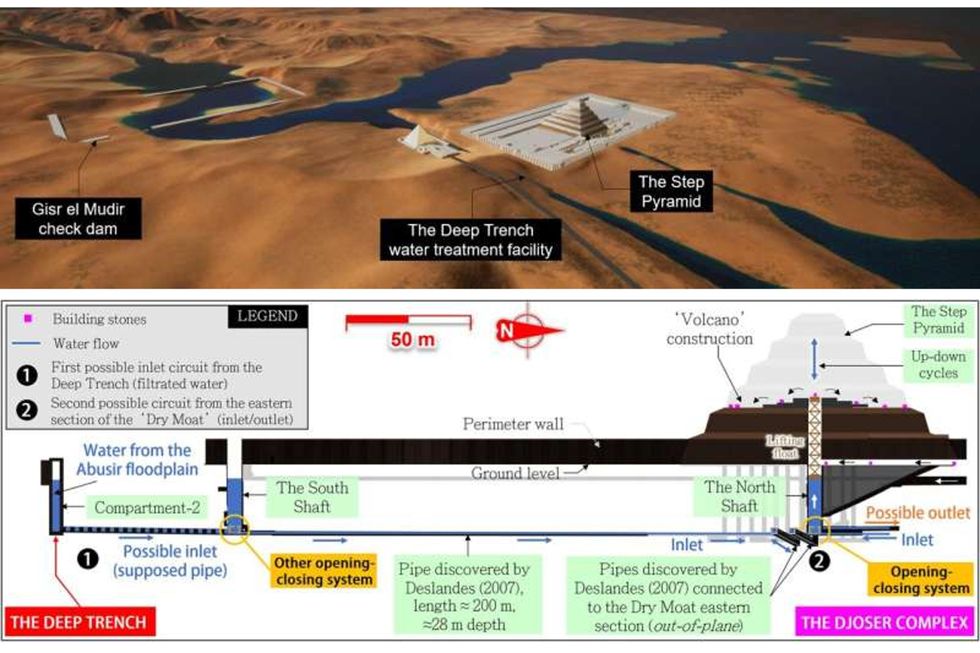Science & Tech
Harriet Brewis
Apr 16, 2025
The Strange Reason Why Pyramids Were Built with Sloping Sides
Bright Side - Vertical / VideoElephant
Egypt’s Great Pyramids have been a source of wonder and mystery for centuries.
But recent research has shed a dazzling light on the secrets of how they were created, and how this involved the impressive use of water.
Now, a new study has suggested that at least one of the great structures was built using equipment that was far more sophisticated than once thought.
The paper, published in the journal PLOS ONE last year, posits that the iconic 4,500-year-old Step Pyramid of Djoser was erected with the help of a unique hydraulic lift system.
In the past, experts believed that the Step Pyramid was most likely constructed using a network of ramps and levers.
However, the latest analysis, led by Xavier Landreau of France’s CEA Paleotechnic Institute, suggests that the Ancient Egyptians channelled nearby canals to power weight-bearing lifts.

The study suggests that water was enabled to flow into two shafts, located in the pyramid itself, which were used to help raise and lower a float used to carry the heavy stone building blocks.
“Ancient Egyptians are famous for their pioneering and mastery of hydraulics through canals for irrigation purposes and barges to transport huge stones,” the researchers wrote.
“This work opens a new line of research: the use of hydraulic force to erect the massive structures built by Pharaohs.”
The Step Pyramid, is believed to have been built in around 2680 BCE as a funerary complex for the Third Dynasty pharaoh Djoser. Yet, the precise method of its construction has always remained unclear.
Landreau and his colleagues argue that a nearby previously-unexplained structure, known as the Gisr el-Mudir enclosure, was, in fact, a “check dam” used to capture water and sediment.
They also posit that a series of compartments dug into the ground just outside the pyramid may have served as a water treatment facility. This would have enabled sediment to settle as water passed through each subsequent compartment.
From there, after flowing into the pyramid’s shafts themselves, the pressurised water would have floated the building stones towards the upper levels of the structure via an internal shaftway, in a process known as “volcano” construction.

Nevertheless, whilst the authors feel confident that “the internal architecture of the Step Pyramid is consistent with a hydraulic elevation device never reported before,” they concede that further investigations are needed.
They now aim to establish how water might have flowed through the shafts, as well as how much water was available in the surrounding area all those thousands of years ago.
Still, they note that whilst other structures, including ramps, were probably also used to help erect the pyramid, a hydraulic lift system could have been used to support the building process when there was enough water.
They stress that their research, carried out in conjunction with “several national laboratories”, has led to “the discovery of a dam, a water treatment facility, and a hydraulic elevator, which would have enabled the construction of the Step Pyramid of Saqqara.”
They conclude: "This work opens a new research line for the scientific community: the use of hydraulic power to build the pyramids of Egypt."
This article was first published on August 7, 2024
Sign up for our free Indy100 weekly newsletter
How to join the indy100's free WhatsApp channel
Have your say in our news democracy. Click the upvote icon at the top of the page to help raise this article through the indy100 rankings
Top 100
The Conversation (0)














